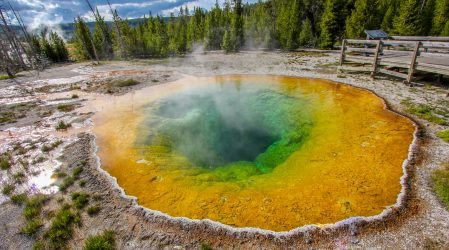Observation Point
The Observation Point is an excellent spot for watching the Old Faithful erupt. The trail to the point is 1.5 miles (2,4 km) long both ways. Next to the Old Faithful there is a metal bridge over the Firehole River. Right behind the bridge you have to turn left and go up. You will have to go up beating 262 feet (80 m) of elevation change. From the top of the hill you will have an amazing view with no one blocking it. But you have to remember to set out early enough so that you get there in time for the eruption.
Going further down this path you will reach the Solitary Geyser. The path slowly goes down. After 2000 feet (600 m) of walking through a pine forest we arrive at our geyser. It is incredibly colorful. The blue lake is surrounded by orange stripes reaching the end of the hill. It does not go off magnificently, at most a few meters up, but very frequently, every 4-8 minutes, and what is more in an amazing leafy scenery.
The whole trip to the hill, without waiting for the Old Faithful to erupt, will take you approximately 45 minutes. If you are running short on time you should focus on the lower part of the Upper Geyser Basin, but the view from here is breathtaking.
Geyser Hill
Now we will begin sightseeing the Geyser Hill (if you have been to the Observation Point you will descend from the hill right here).
The Giantes Geyser is the first one along our way. It is one of the mightiest geysers, as its eruptions reach up to 200 feet (61 m) high. Unfortunately it goes off very rarely and irregularly. Sometimes 6 times a year, sometimes 4 or 2 or not at all for 2 years in a row. But when it does go off the eruption lasts 4 hours, sometimes stretching out to 2 days without a pause. The water thrown into the air is 194oF (90oC). There is a slight shake to the ground that resembles an earthquake foreshadowing an eruption. Naturally this shaking can also foreshadow a real earthquake.
Going further we pass the Teakettle Spring, a spring with boiling water, hence the tea lover friendly name.
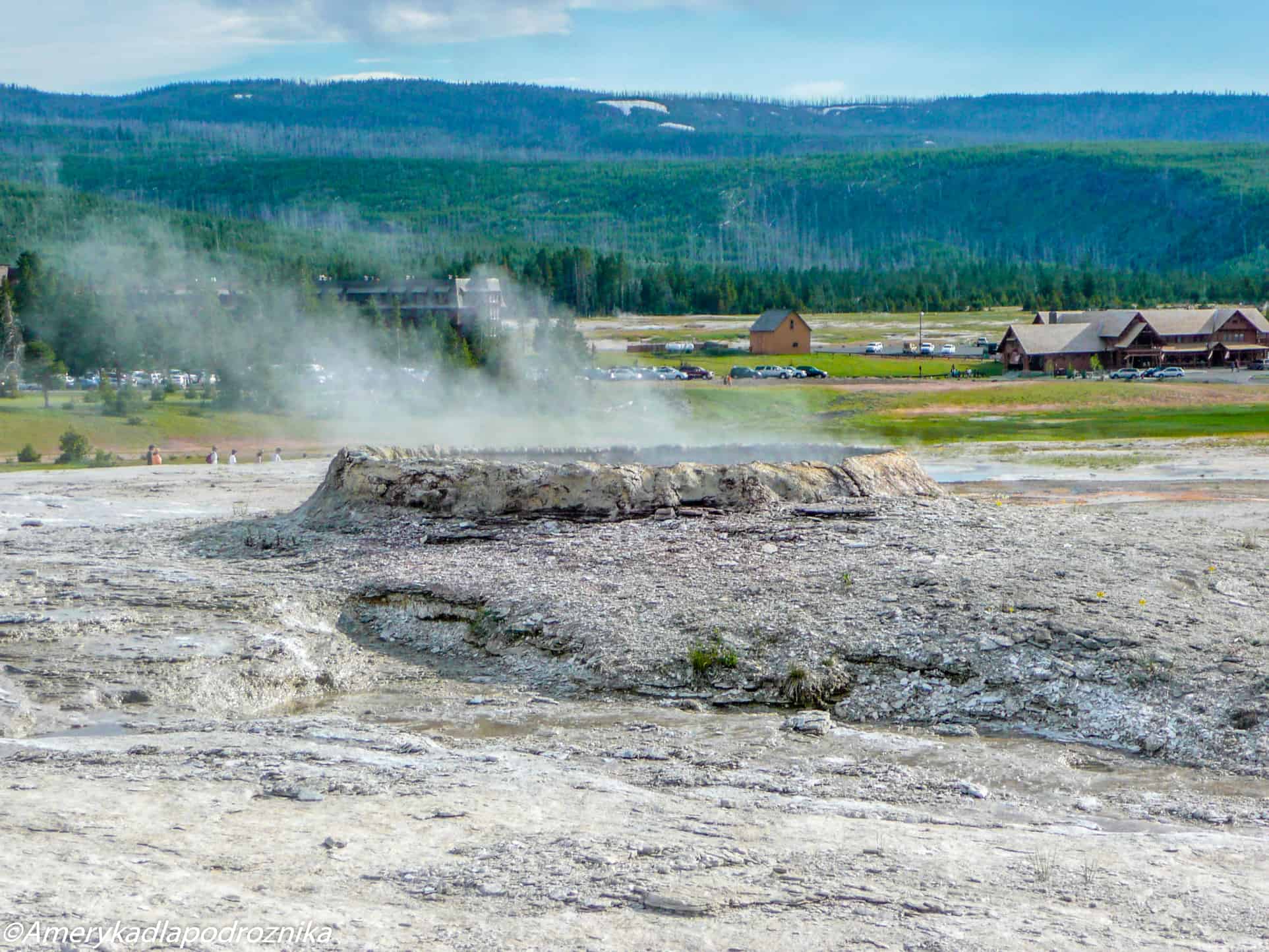
The Sponge Geyser is going to be the next stop. It bubbles more than it erupts. However, it is very active with water boiling every couple minutes and small eruptions that are a dozen inches high. This is one of the oldest geysers in Yellowstone and its cone is slowly becoming a subject to erosion.

Further we pass the Doublet Pool, a hot spring consisting of two connected pools. It is one of the most popular subjects to photograph in Yellowstone. The pool is light-blue with deep blue center and travertine terrace encircling it.

Now it is time for the Aurum Geyser, which erupts 23 feet (7 m) high. Unfortunately it is incredibly hard to predict an eruption. But there is a certain correlation that has been noticed. If the meadow around the geyser is wet, the geyser erupts every 3-4 hours. When it dries out in summer the eruptions are unpredictable, but usually 4-7 hours apart.
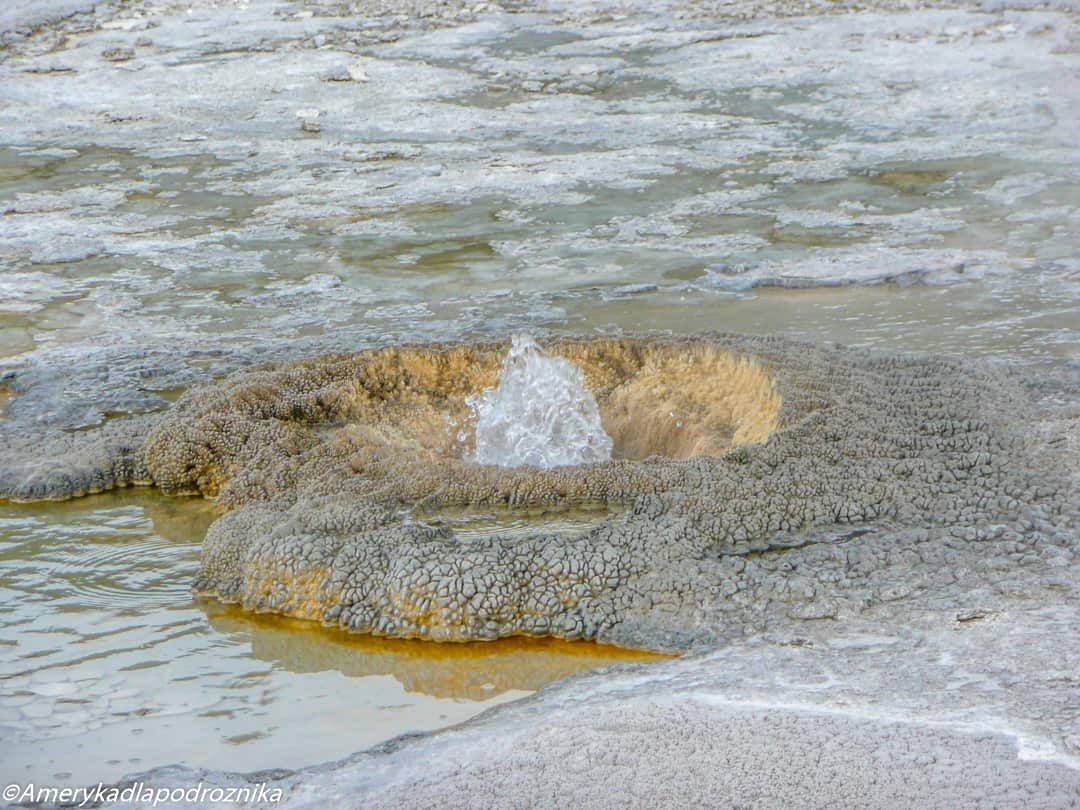
Doing a loop we reach the Lion Group. This is a group of 4 geysers that are connected underground. Those are the Lion Geyser, Lioness Geyser, Big Cub and Little Cub Geysers. Lion is the largest one. Its name comes from the roaring sound that precedes its eruption. It erupts 88 feet (27 m) high and an eruption can last up to 7 minutes. However, usually they are 1-4 minutes long. It is very scenic, but also unpredictable, going off every 6 to 50 hours. The Little Cup is also active, erupting every 30-90 minutes with water reaching 10 feet (3 m) high.

Right after Lion Group we reach the Heart Pool. It is a small, but very picturesque pool in the shape of a heart.
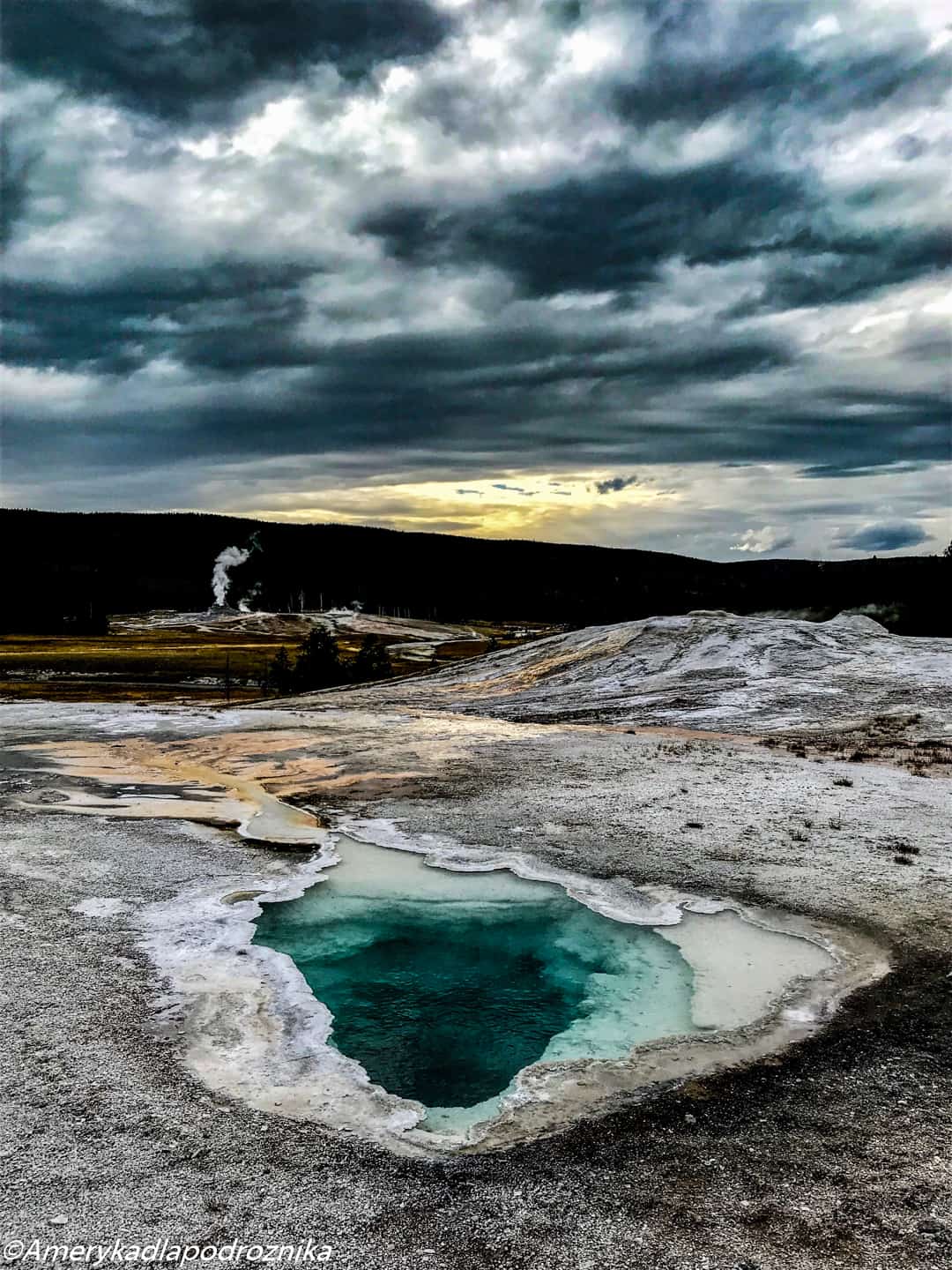
Now we are approaching the beautiful Beehive Geyser with an exceptionally spectacular eruption. The water reaches up to 180 feet (55 m). Beehive erupts 2 times a day and you can get estimated eruption times in the Visitor Center.

At the end of the loop we reach the Plume Geyser, which erupts every 20 minutes. But it has phases during which it remains totally inactive. Those phases can last up to a few weeks. When it erupts it throws water 26 feet (8 m) high.
Castle-Grand Area
Further down the river we reach the Sawmill Geyser. This unpredictable geyser goes off every 1-3 hours and the eruptions last approx. 4 minutes. But there have been eruptions lasting over 4 hours. We have visited the Upper Basin 3 times alread. Every time we witnessed and eruption that kept on going the whole time we were there.
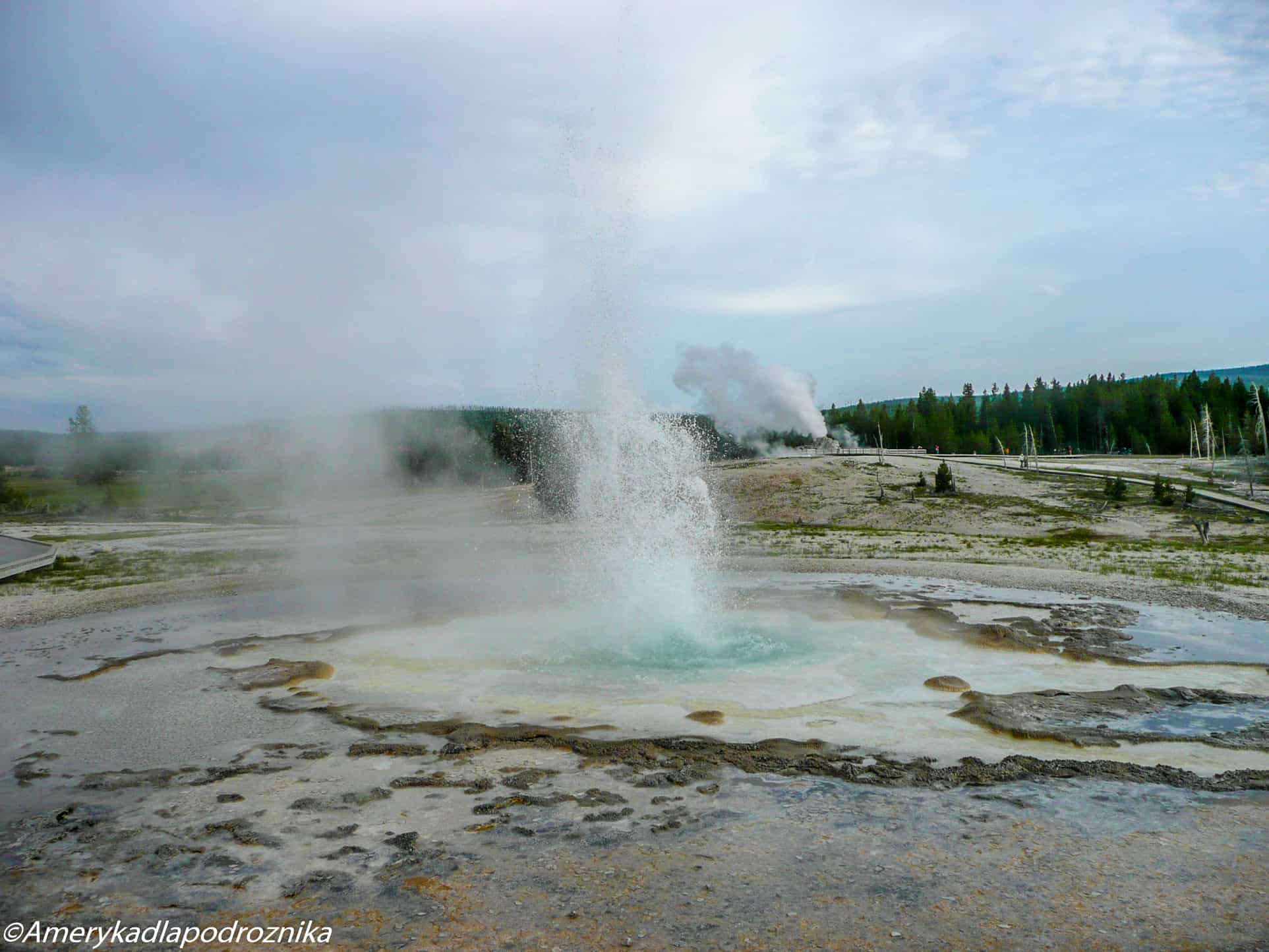
We continue straight forward avoiding a left turn. We will come here through a different path on our way back. We reach the Spasmodic Geyser, which erupts simultaneously from two outlets every 1-3 hours. The geyser shoots water 13 feet (4 m) high.
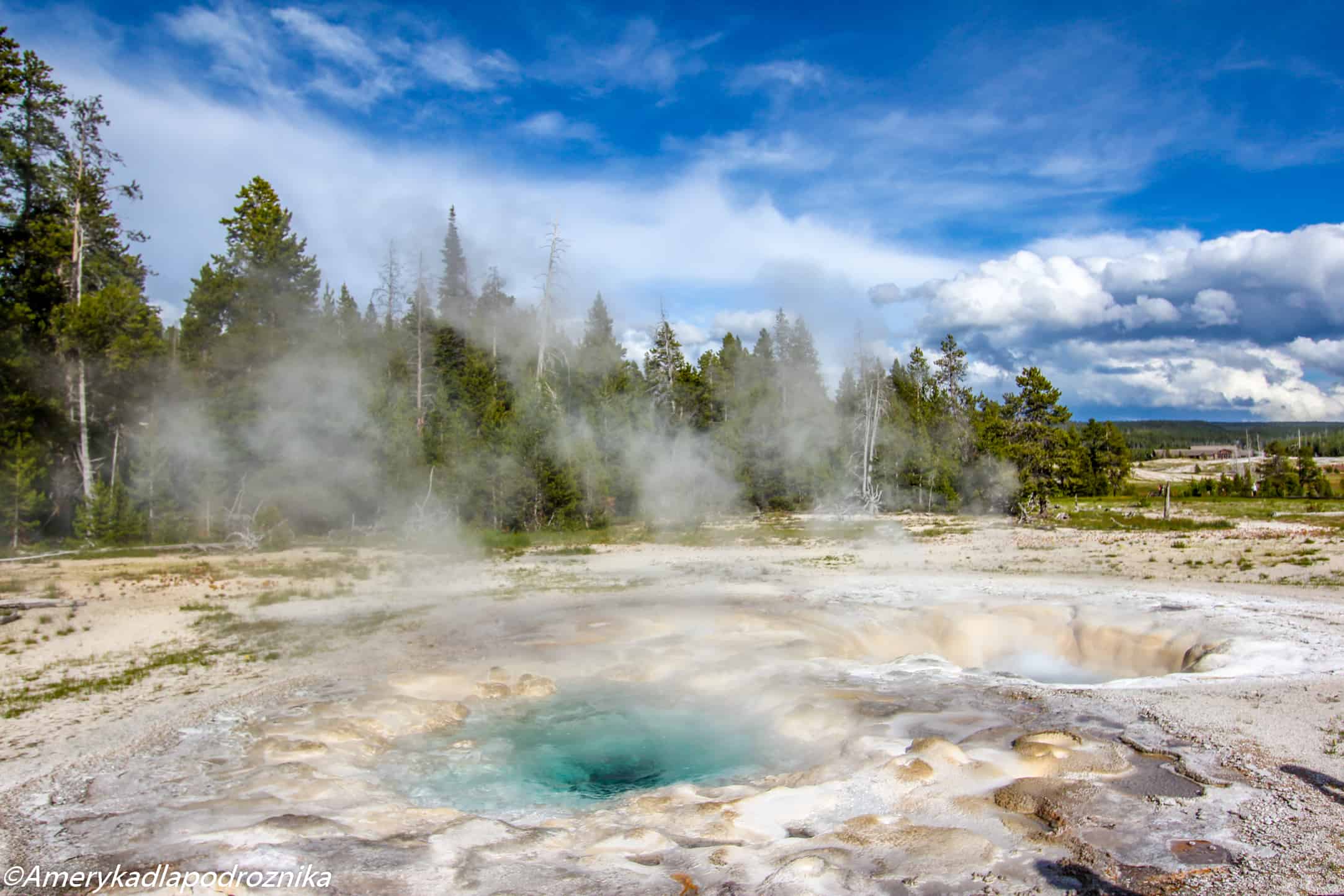
Going further we pass the Belgian Pool – one of the pretties ones int the Upper Basin. I honestly thought that the name comes from some Belgian chocolates. It is candy-cute and beautiful. Unfortunately it comes from a Belgian tourist who fell into it and died as a result of the burns.
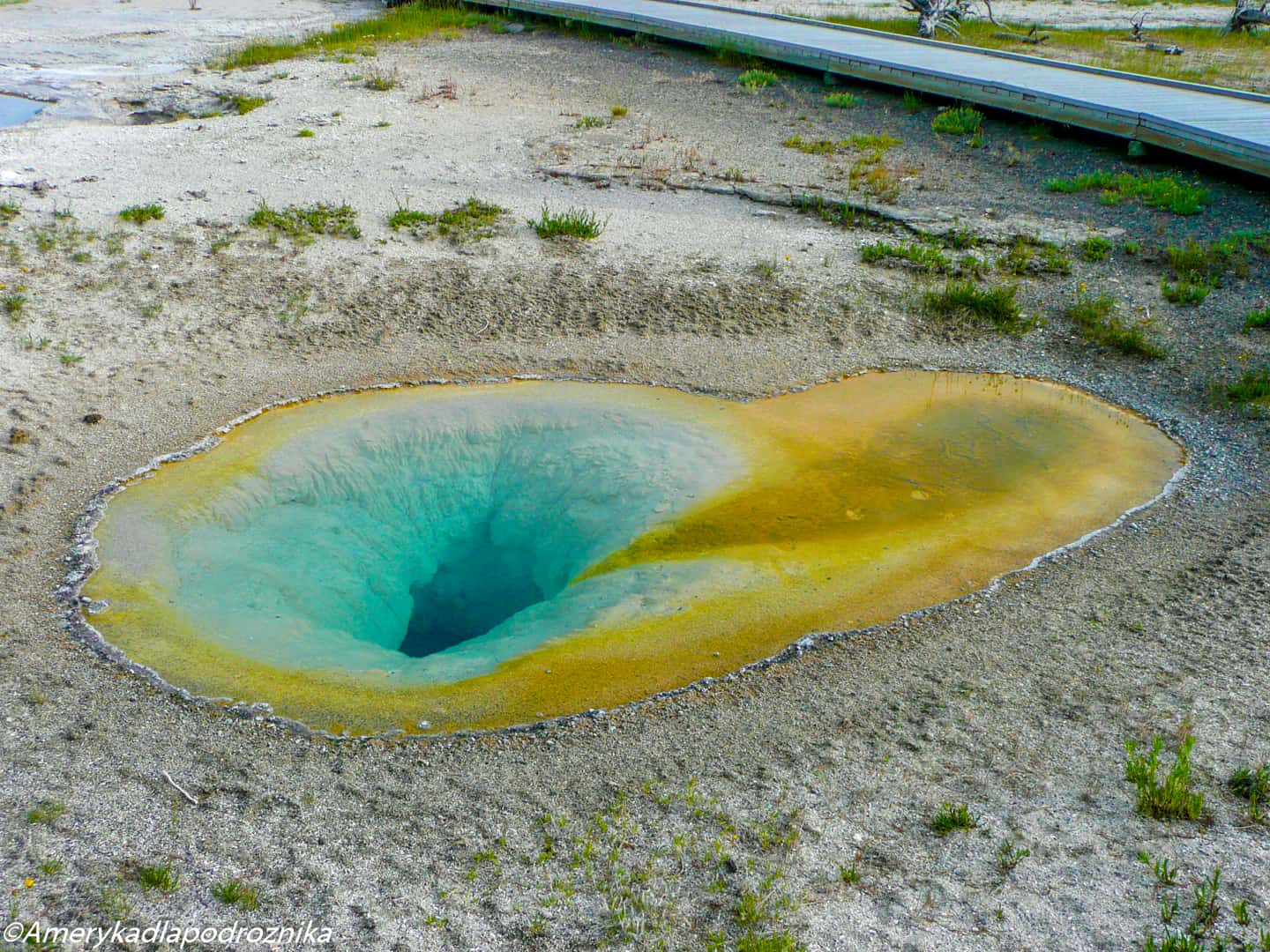
The Grand Geyser is next along our way. This is one of the highest erupting geysers in the US, with water reaching 200 feet (61 m) high. It erupts every 6-15 hours, but usually the breaks between eruptions are 7-8 hours long. You can receive the estimated eruption time in the Visitor Center. The geysers usually has a couple of eruptions and after a 5 minute pause the largest one happens. It is worth staying and waiting a little bit afterwards to make sure that that is really it. Grand Geyser is really a crater filled with water. When the water starts to pour out, it is a sign that an eruption is imminent.
Next to the Grand Geyser there are the Vent and Turban Geysers. They are connected to the Grand Geyser and usually go off just before or right after it. Sometimes all 3 of them erupt at the same time.

The Crested Pool and the Castle Geyser are also assigned to this area, but we will visit them on our way back without beating unnecessary distances. Now we go straight forward.
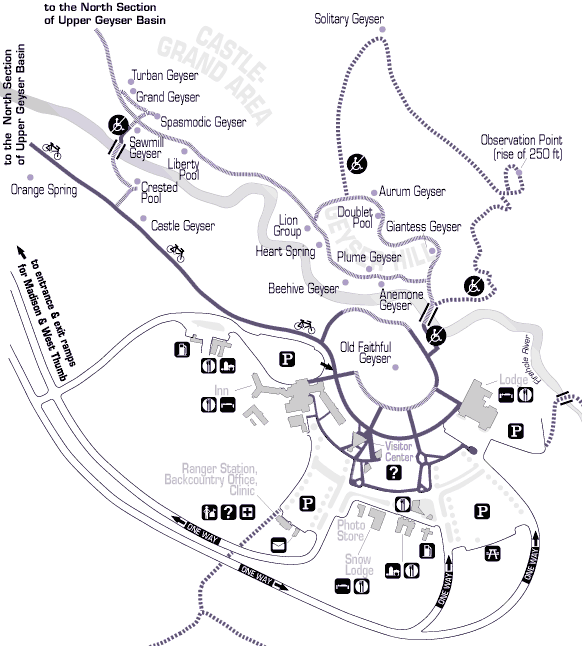
Giant-Grotto Group
There are two beautiful pools ahead of us – Beauty and Chromatic Pool, both in the colors of a rainbow.


After crossing the river you will reach the Giant Geyser. This massive geyser erupts 180-246 feet (55-75 m) high and is the second highest erupting geyser in the world. The eruption unfortunately cannot be foreseen, they sometimes occur a couple times a month or even a year, and sometimes not at all for a few years. But when it does go off the eruption lasts an hour throwing almost 4 million liters of water into the air. For comparison – Old Faithful throws only 40 thousand liters.
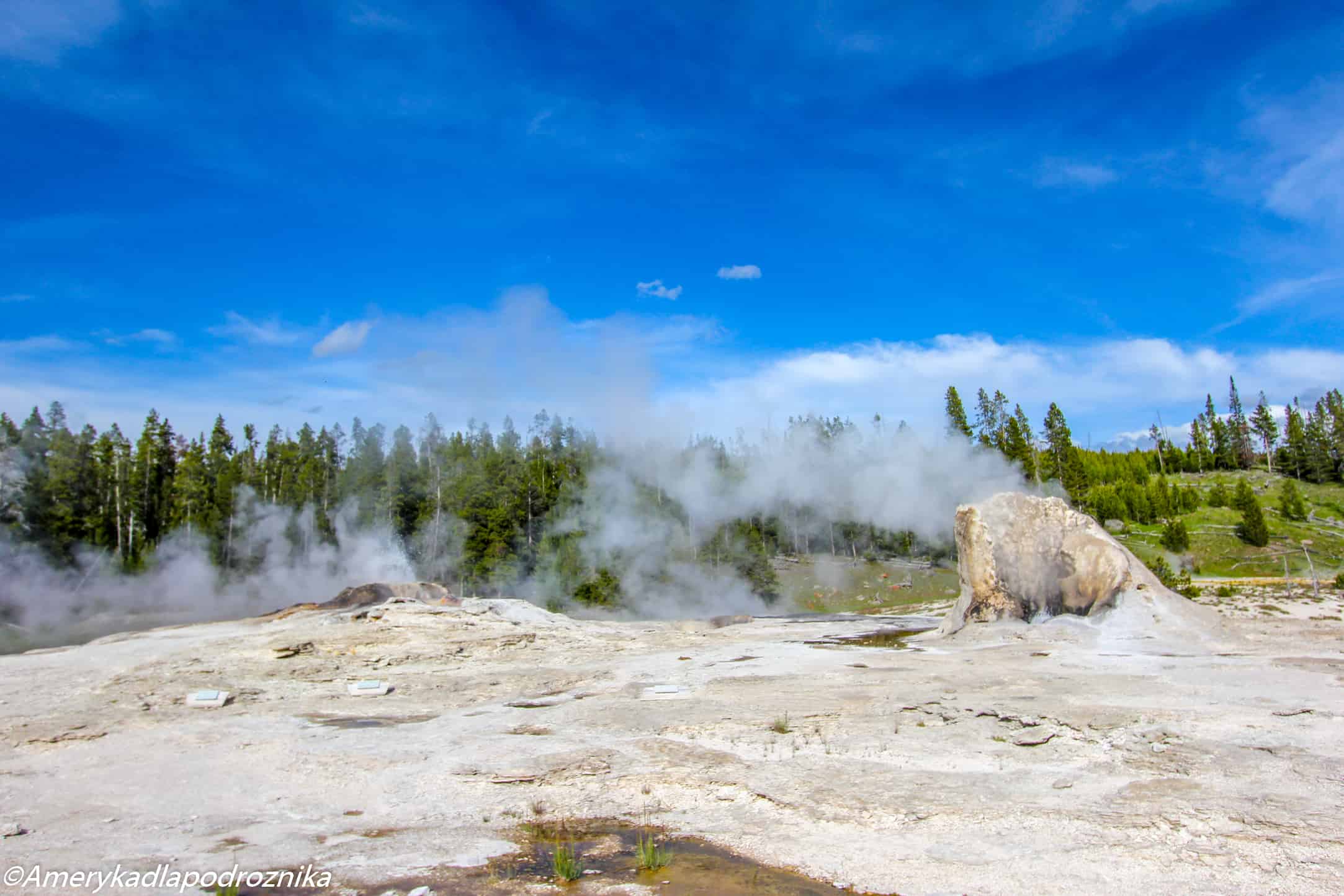
Now we reach the Grotto Geyser. Its amazing shape is a result of tree trunks that crystalized and were covered in travertine inside the geyser. Grotto Geyser erupts every 8 hours, usually together with the neighboring Rocket Geyser. The eruptions are not too high, but very spectacular and long lasting – they can go on for an hour. We stood in front of it for half an hour and it kept on erupting. It still kept going off as we left it alone.

CONTINUE READING:

